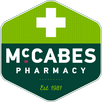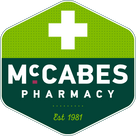Face masks for removing blackheads—choosing a product and how to use it
Blackheads are a problem for many people and fortunately there are lots of different ways to tackle them. One particularly effective method is the face mask.
On this page, we explain what blackheads are and how they form, and tell you how to incorporate blackhead face masks into your daily and weekly cleansing regime.
Click on a link to jump to that section:
Blackheads
What are they?
Blackheads are small, dark bumps that form on your skin. A mild type of acne, they most commonly appear on the face (particularly the nose and chin), but can also affect the:
- Back
- Shoulders
- Neck
- Chest
- Arms
While they might look like little specks of dirt, they aren’t. The dark spots are actually blocked hair follicles—we explain this further below.
Why do they appear?
A blackhead forms when a hair follicle becomes clogged.
Your body has around five million of these follicles. Each one contains a hair and a sebaceous gland. This gland produces oil—known as sebum—that helps soften your skin.
As your skin cells die off, they collect inside the follicle, where they mix with the sebum oil and form a plug. The plug moves to the surface of your skin and creates a bump called a comedone.

There are open and closed comedones. Blackheads are open comedones, as they form when the skin around the bump opens and becomes exposed to oxygen. The oxygen causes the sebum oil to turn black.
Closed comedones don’t open up in the same way and so don’t darken. Instead, they often form as whiteheads or inflamed pimples.
What causes them?
Like other kinds of acne, blackheads are typically caused when the body produces too much of its natural sebum oil.
This is why it’s a very common condition for teenagers and young people going through puberty. During these stages of life, the body produces hormones at a faster rate, which then stimulates the sebaceous glands into creating more oil. This excess of oil enables blackheads to form in greater numbers.
However, some people simply have quite oily skin and are more prone to developing comedones as a result.
The following can also cause blackheads:
- Not cleaning the skin properly—allowing dead skin to accumulate in the pores or bacteria to build up
- Hormonal changes that occur during menstruation or while taking contraceptive pills
- Taking drugs such as corticosteroids, lithium or androgens
- Using oil-based make-up, cosmetics or moisturisers
- Working in humid or greasy environments (e.g. near a fryer in a kitchen)
It’s also claimed that smoking, and eating dairy products or foods that increase blood sugar levels (e.g. carbohydrates), can be a contributing factor, but there isn’t a great deal of scientific evidence to support this.
Is it a blackhead or a sebaceous filament?
Most people have tiny, dark dots on their nose or chin. Though these dots might look like blackheads, they aren’t! They’re actually sebaceous filaments—clogs inside your pores that form when the sebaceous glands in your hair follicles produce too much sebum oil.
However, unlike blackheads—which darken because they’re exposed to the air—sebaceous filaments are simply the dark tips of the filaments within your pores. They are not a type of acne.
How to remove blackheads with a face mask
The key to removing blackheads is to follow a daily and weekly face-cleaning regime that includes these steps:
- Cleansing
- Exfoliating
- Applying a face mask
Cleansing—twice a day
Washing your face twice each day, once in the morning and again at night, removes the build-up of oil on your skin. Don’t be tempted to wash more than this—overcleaning can actually irritate your skin and worsen your acne.
The cleansing process is all about gently exfoliating the surface of your skin. Use a water-soluble, oil-free cleanser—ideally one formulated to treat blackheads—on a clean facecloth or cotton pads. Make sure the cleanser is mild enough not to redden or irritate your skin.
Tips
Avoid:
- Oil-based products—these can cause new blackheads to form
- Thick lotions and creams—these block your pores rather than unclog them, so choose products that come as a gel or light lotion instead
- Ingredients that cause irritation, such as alcohol, peppermint, lemon or eucalyptus
Exfoliating—twice or three times a week
To remove the dead skin cells on your face and help reduce blackheads, use a face scrub twice or three times a week—once a week if your skin is particularly sensitive.
Don’t exfoliate any more frequently than this—every day, for example. While doing so will remove the dead skin, it will also strip the skin of its natural sebum oil, which can cause blackheads and other spots to break out. It’s likely to irritate your skin too.
After exfoliating, you might consider using a face serum then a moisturiser. Serums not only soothe the skin and leave it smooth and soft, but are a very effective way of boosting your vitamin intake. Moisturisers give your skin that much-needed hydration as well as a radiant, healthy glow.
Tips
Look for products that contain salicylic acid. This ingredient is an extremely effective exfoliant, as it can deeply penetrate the layers of the skin to loosen and dissolve dead cells and unclog pores.
While exfoliating involves some scrubbing, don’t be too forceful. Scrubbing your face hard will only result in inflammation or irritation, which can then prompt it into producing more of its natural oils. Exactly what you’re trying to get rid of!
Applying a face mask—once a week
Once a week, apply a face mask to cleanse your skin of dirt and bacteria and remove impurities and excess sebum oil.
How to apply and remove a blackhead face mask
Once you’ve bought a product to apply to your face, don’t rush into it! There are some things to consider first, before you put on your face mask.
Make sure you aren’t allergic to the mask
Always test your skin for an allergic reaction or irritation before you apply the mask to your entire face. Apply a little of the product to your cheek, then wait 10 minutes. You might be allergic, or sensitive to the product, if your skin starts to itch, swell or turn very red.
Cleanse and exfoliate
The mask will work more effectively on clean skin, so wash the dirt and oil off your face first (see above). Oil in particular can stop the mask from pulling out blackheads. Exfoliating results in open, enlarged pores, as does steaming your face or using a hot towel for around five minutes beforehand.
Apply the mask
If you have long hair, tie it back. It might be easier to put a small amount of the product in a bowl and brush it on with a make-up brush, although using your fingers is fine too.
Spread the mask evenly over your skin, particularly on your nose, forehead and chin, where blackheads most commonly form. Avoid getting it near your eyes and mouth.
Wait…
Follow the instructions given with the product, but most face masks take between five and 10 minutes to dry. You might feel some tightness or itchiness but this is normal. However, if it becomes very uncomfortable or painful, wash off the mask straight away.
Peel off the mask
If you applied the mask to your whole face, start near your chin and peel slowly upwards. If you only applied it to your nose and forehead (called the “t-zone”), peel away the mask from the sides of your nose and pull it up towards your forehead.
Wash your face
Sometimes, peeling off the mask leaves little bits of the product on your face. Use a mild cleanser to wash your skin and rinse with cold or lukewarm water.
Moisturise
Apply a gentle moisturiser that won’t block your pores.
Face mask ingredients—clay and charcoal
Face masks incorporate a range of skin-kind ingredients. However, two things you’ll see used in lots of products aimed at tackling blackheads/acne are:
- Clay
- Activated charcoal
Clay face masks
These use many different types of naturally occurring clay, including volcanic clay, smectite, bentonite and kaolin. All are highly effective as they’re very absorbent, drawing out impurities and oil and leaving a smooth, even skin tone. In fact, you’ll be able to see the sebum oil as it surfaces on the clay.
Clay is also proven to reduce redness and swelling, making it ideal for people with sensitive skin.
For best results, exfoliate your skin before you apply a clay face mask—this will allow the clay to really penetrate your skin and work its magic.
Best clay face masks from McCabes
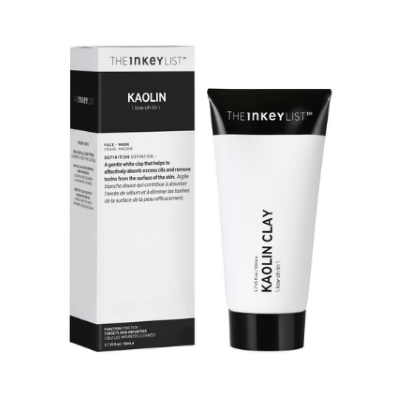 |
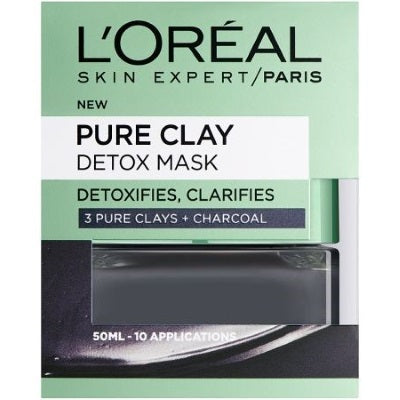 |
|
The Inkey List Kaolin Clay Mask 50ml
|
L’Oréal Paris Pure Clay Detox Mask 50ml
|
|
Price: €6.99 |
Price: €11.99 |

The Inkey List Kaolin Clay Mask 50ml
- Kaolin and smectite clay to remove impurities and unclog pores
- Non-drying
- Suitable for all skin types
- Paraben-free, fragrance-free and cruelty-free
Price: €7.50

L’Oréal Paris Pure Clay Detox Mask 50ml
- Draws out impurities
- Enriched with black charcoal
- Relaxing fragrance
Price: €12
Activated charcoal face masks
Activated charcoal is a fine black powder made when a carbon-based material (such as wood) is heated at a high temperature to create charcoal, then oxidised (or “activated”).
The way in which it forms means it has many small holes on its surface, which makes it very porous and absorbent. This is what enables it to extract dirt, impurities and toxins from your pores and remove dead skin cells.
Best activated charcoal face masks from McCabes
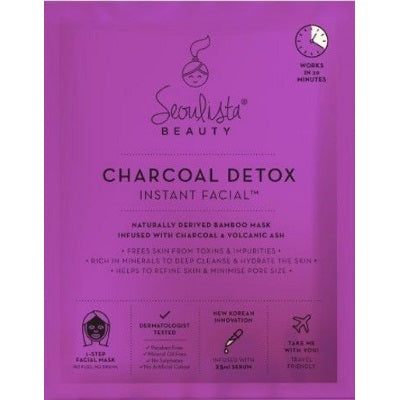 |
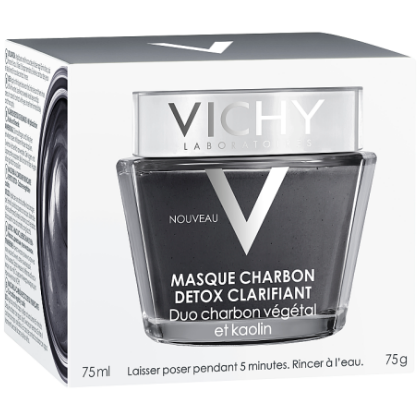 |
|
Seoulista Charcoal Detox Instant Facial
|
Vichy Clarifying Detox Charcoal Mask 75ml
|
|
Price: €9.00 |
Price: €18.00 |

Seoulista Charcoal Detox Instant Facial
- Frees skin from toxins and impurities
- Rich in minerals
- Dermatologist-tested
- Free of parabens, sulphates and artificial colours
Price: €9.49

Vichy Clarifying Detox Charcoal Mask 75ml
- Deep pore cleansing
- Results in just 5 minutes
- Mineralising thermal water invigorates the skin
- 100% hypoallergenic
- Tested on sensitive skin
Price: €18.00
Frequently asked questions
Do blackhead face masks work?
As with most skincare products, whether or not they work depends on the person using them. Everyone’s skin is different, and what is a resounding success for you might have absolutely no effect on someone else, or vice versa.
What is very important is to choose a high-quality product from a reputable provider. It’s also vital to test it on your skin before you go ahead with applying the product to your entire face.
If you’re unsure whether such a hydrating face mask is right for you, why not speak to a dermatologist? They will be able to tell you about the benefits and drawbacks of using blackheads face masks and recommend products that are most suitable for your type of skin.
Can I make a face mask to remove blackheads?
While the internet is awash with recipes for DIY blackhead face mask, we wouldn’t recommend that you try them. Many of them have proven to be harmful to a lot of people, leading to damaged or irritated skin and, in some cases, quite severe pain. It’s always best to use a high-quality product from a reputable outlet.
Do mud masks get rid of blackheads?
Mud masks (such as Dead Sea mud masks) are good for exfoliation and hydration and are known to absorb oil, dirt and impurities. They aren’t too different in composition to masks made of clay. As a result, some people have found mud masks to be effective at treating blackheads and other forms of acne.
